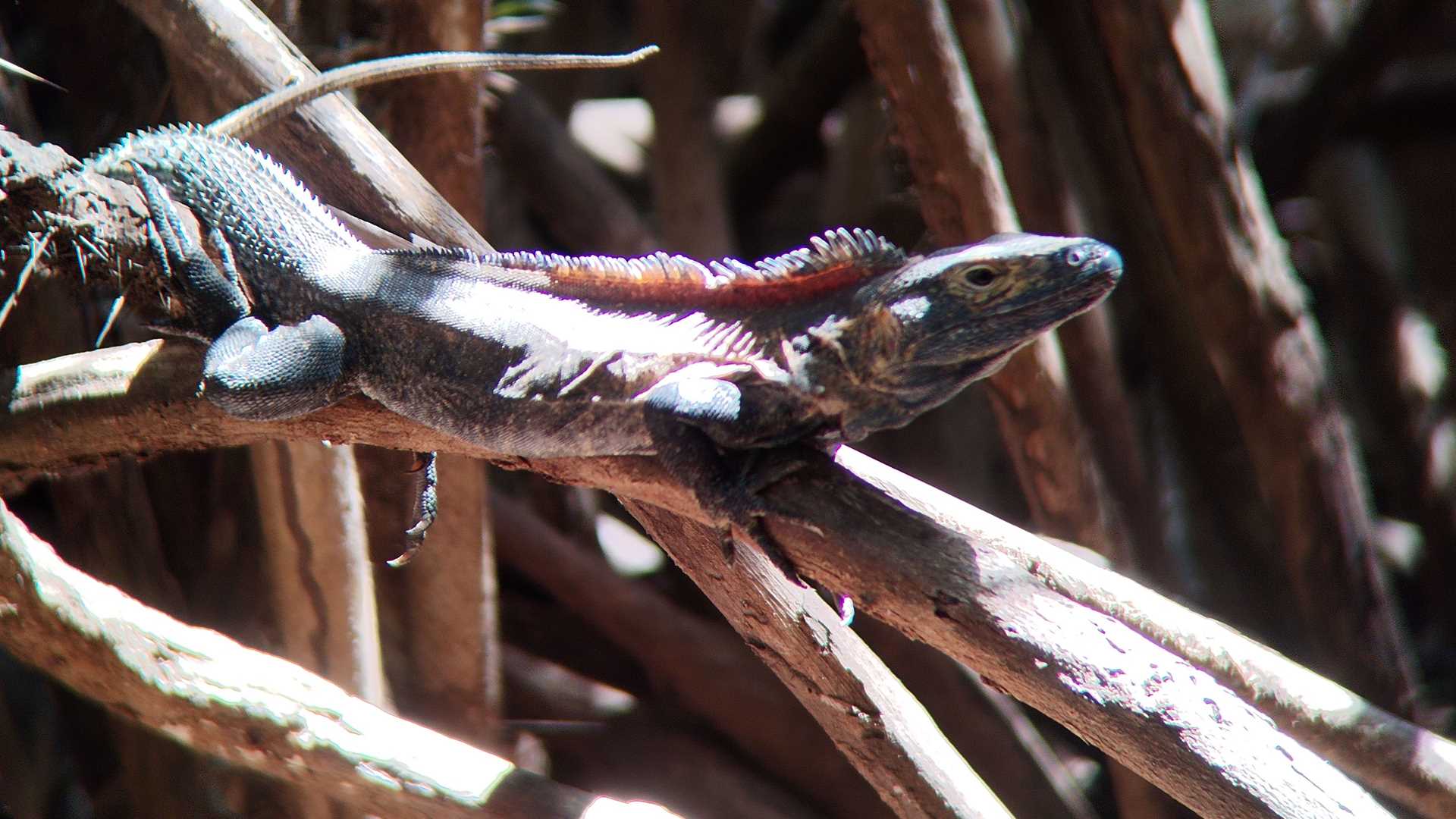With white sand beaches, an incredible rock formation, and one of the largest frigatebird nesting spots, Iguana Island gave us quite a show. Years ago, the island was used as a target to test bombs. If you walk the loop trail El Faro, you can still see the remaining craters from the blasts.
This small island of about 55 acres was declared a natural reserve in 1981. It’s home to several species of fish and some of the oldest coral reef in the area. Is considered one of the most important destinations for snorkeling.
The name of the place is also because iguanas are among the easiest animals to spot. The black spiny-tailed iguana patrols the whole island. Males compete for territory and for females. The largest males are often observed chasing away the young males that want to take their spot. Another abundant species are the hermit crabs. Those little creatures eat everything they can find in their surroundings and compete seriously for new shells to protect themselves.
It was a great day for swimming, snorkeling, wildlife observation and birdwatching.







